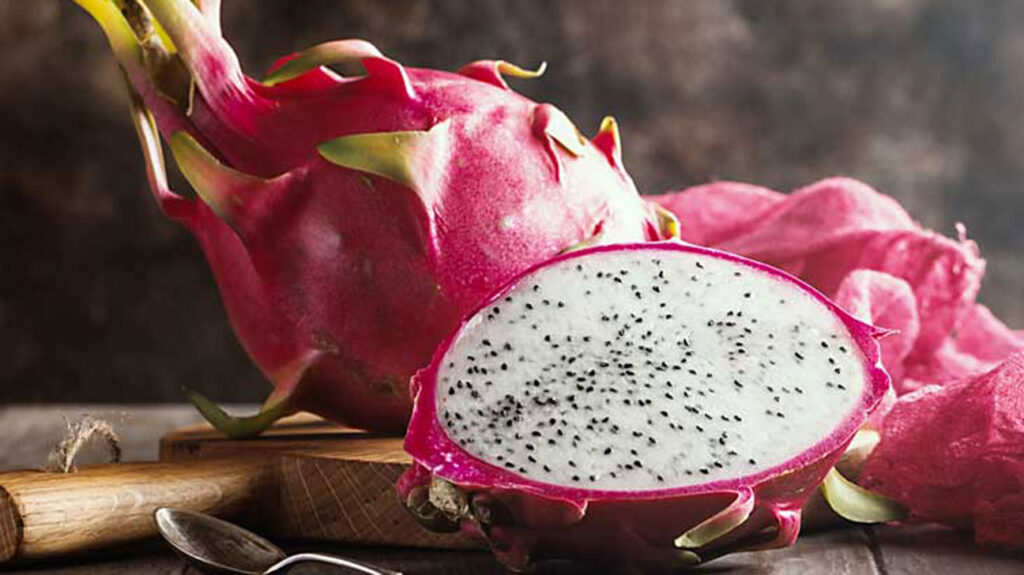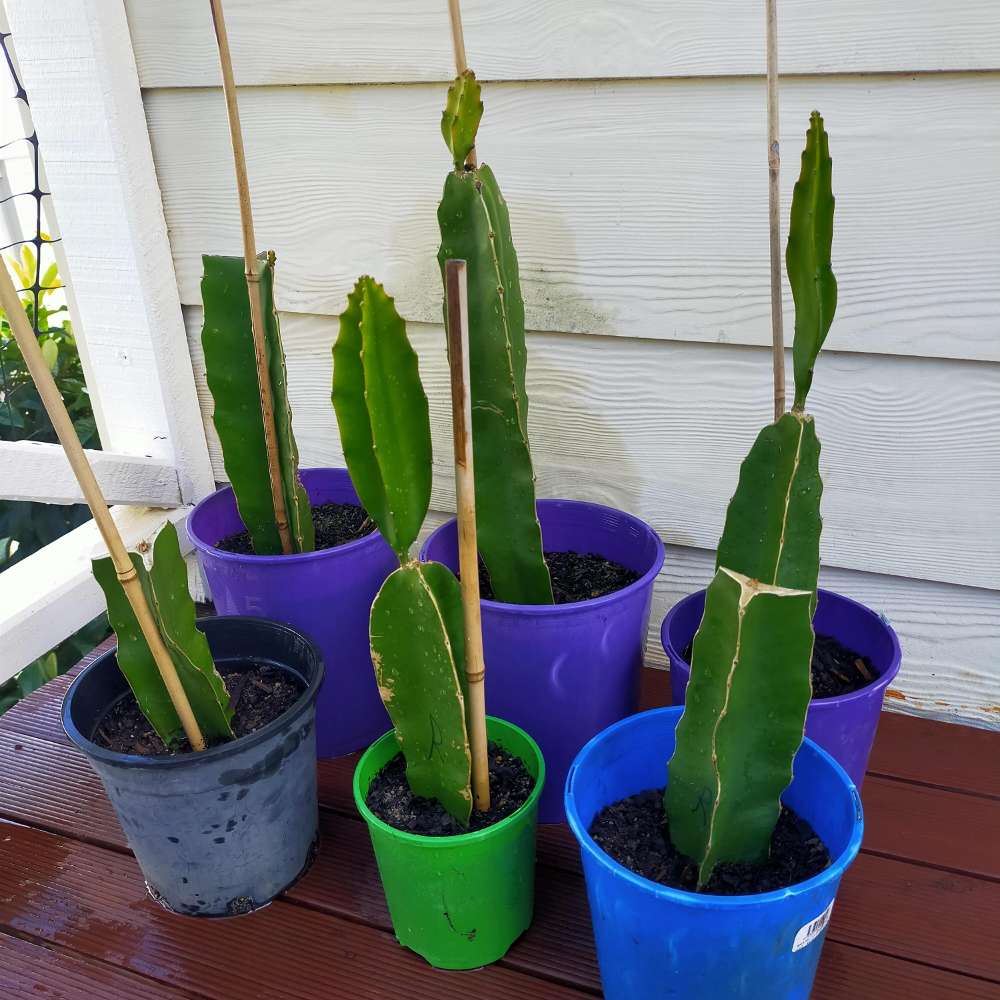No. 1 Guide To Dragon Fruit Farming in Kenya
Dragon fruit farming in Kenya is an emerging industry full of potential and profitability.
This exotic superfood is gaining popularity among health-conscious consumers seeking its unique properties and benefits.
As demand rises globally, Kenya provides ideal climatic conditions to become a leading producer and exporter of dragon fruits.
This detailed guide explores everything you need to know about succeeding in dragon fruit cultivation in Kenya.
An Introduction to Dragon Fruits

Dragon fruit, also known as pitaya, originates from Central and South America. This exotic cactus fruit comes in several bright and vibrant varieties:
- Red dragon fruit has reddish-pink skin and sweet, juicy red flesh.
- White dragon fruit has yellow skin and sweet, crunchy white flesh.
- Yellow dragon fruit has yellow skin and flesh with a tangy, refreshing flavor.
These tropical fruits offer exceptional nutritional value.
They are packed with fiber, vitamin C, B vitamins, iron, magnesium, calcium, antioxidants, and other essential micronutrients.
Consuming dragon fruits regularly promotes digestive health, strengthens immunity, increases energy, builds strong bones, and protects against chronic disease.
Their hydrating properties also make them ideal rehydration fruits.
Climate and Soil Requirements
Dragon fruit thrives in warm, dry tropical and subtropical climates.
Temperatures between 20°C and 35°C are optimal.
At least six hours of direct sunlight per day is essential.
These resilient plants withstand droughts and high heat well. Rainfall between 40mm to 60mm annually satisfies their needs.
Excess moisture can lead to root rot.
Dragon fruit adapts to various well-draining soil types like sandy loam and clay loam.
A pH between 5.5 and 7 is ideal.
Incorporate compost or manure before planting to enrich the soil.
Good drainage is critical to prevent waterlogging around the roots. Sandy soils may require additional organic matter to hold moisture and nutrients effectively.
Propagating Dragon Fruit Plants

Dragon fruits propagate through cuttings and seeds.
However, using cuttings from mature, healthy plants is the most reliable method.
Cuttings
To propagate from cuttings:
- Take 20cm cuttings from pest-free mother vines.
- Allow cuttings to dry and callous for 2-3 days.
- Plant cuttings in pots or directly in prepared beds enriched with compost.
- Water moderately and provide stake support as vines establish.
Seeds
Although less common, dragon fruits can also propagate from seeds. Note that seed-grown plants may not share parental traits.
To grow dragon fruit from seeds:
- Extract seeds from ripe fruits and clean off pulp remnants.
- Dry seeds fully and store in a cool, dry place.
- Plant seeds in trays, water sparingly and allow to germinate.
- Transplant seedlings into pots or ground beds once established.
Dragon Fruit Growing Techniques
Proper planting and care ensures healthy, robust yields from your dragon fruit crop.
Follow these key techniques:
Planting
- Dig beds 2m wide and enrich soil with organic matter.
- Space plants 2m apart in rows 3m apart to allow airflow and vine spread.
- Support each vine with strong stakes or trellises.
- Plant drought-tolerant groundcovers between beds to retain moisture.
Watering
- Dragon fruit needs less water than other fruits but still requires regular irrigation.
- Utilize drip irrigation to conserve water and target roots directly.
- Water once every 5-7 days, increasing frequency during hot, dry periods.
- Reduce watering frequency after fruit set to concentrate sweetness.
Fertilizing
- Test soil to determine nutritional needs before planting.
- Work compost, manure, and granular fertilizer into beds before planting.
- Apply a balanced liquid fertilizer every 2-3 weeks during the growing season.
- Increase phosphorus intake once flowers emerge to promote fruit production.
Pruning
- Prune annually before flowering to remove dead stems and shape vines.
- Prune strategically to optimize air circulation and direct energy into fruiting.
- Remove excessive lateral shoots to prevent overcrowding.
Pest and Disease Control
- Monitor closely for potential infestations and treat promptly if found.
- Promote natural predators like ladybugs and lacewings to manage pests.
- Remove and destroy infected plant material immediately.
- Improve airflow and plant spacing to prevent disease spread.
Harvesting and Yield
Dragon fruits begin fruiting from 12-18 months after planting. The fruits ripen between August and December in Kenya.
Check for signs of ripeness like bright, vibrant skin color and slightly softened spines.
Use pruning shears or scissors to carefully twist or clip ripe fruit from vines.
Handle harvested fruit with care to prevent bruising.
Dragon fruits last 2-3 weeks when stored properly in a cool, dry area.
Expect an average annual yield of 20-25 tons per hectare. Productivity increases as vines mature over years.
Profitability and Market Potential
Dragon fruit delivers high returns for farmers in Kenya.
These exotic superfoods retail for Ksh 800 – Ksh 1500 per kg locally.
Strong demand coupled with limited domestic supply enables farmers to command premium pricing.
Urban supermarkets, hotels, restaurants, open markets, and street vendors represent distribution channels for fresh dragon fruit sales.
Value addition through drying, juicing, or using pulp in products like ice cream and yogurt also expands market reach.
Additional income streams come from international exports to the Middle East, Europe, and Asia where dragon fruits fetch even higher prices.
As global demand rises, the export market offers massive untapped potential for Kenyan dragon fruit growers.
With ideal climatic conditions, proper cultivation techniques, and sound marketing strategies, dragon fruit farming presents an extremely lucrative opportunity in Kenya.
Final Thoughts
This comprehensive guide summarizes the key considerations for dragon fruit farming in Kenya – from optimal growing conditions and propagation methods to cultivation techniques, harvesting, profitability analysis, and marketing opportunities.
Dragon fruit is one of the most profitable exotic superfoods to farm, with demand rising steadily among health-conscious consumers.
By leveraging Kenya’s ideal tropical climate and implementing the best practices outlined here, farmers can capitalize on this crop’s immense income potential now and for decades to come.
The future looks bright for Kenya to establish itself as a prime producer and supplier of premium-grade dragon fruits globally.
If you have any other questions feel free to reach out to our agricultural experts to start your dragon fruit farming in Kenya venture off right.
Related:



